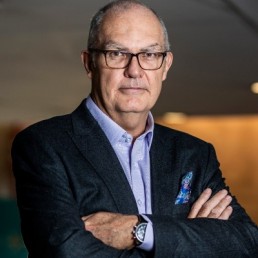Information Technology is understood to be a key piece of the sustainability puzzle. Whatever sustainability KPIs we set ourselves, the increased or enhanced use of digital technologies is very often deployed as a way to achieve them. In fact, an IDC survey found that 50% of European organisations have done just that.
There are many reasons to have a corporate focus on sustainability. It is not unusual for investors to look at Environmental, Social and Governance (ESG) metrics as part of their selection criteria, and for good reason – research shows that companies with high ESG ratings are generally better performers in the long term.
How does this impact the CIO? We can see many ways that tech has powered sustainability initiatives in our society, from smart district heating and cooling systems contributing to carbon-neutral neighbourhoods in Sweden, through smart grid technologies enabling Germany to raise renewable energy usage levels above 30% annually on average. But sustainability is about far more than reducing energy consumption. In creating sustainable businesses we are aiming to operate without negatively affecting the environment, community or society as a whole.
Digital Leaders have a huge role to play in championing and deploying sustainable practice in their own teams and enabling them in the wider business. The enforced remote working experiment carried out over the last year has proven many use cases that might have seemed impossible before. Providing people with flexibility about how, when and where they work has been immensely beneficial to many, with improved work-life balance and a reduction in the amount of travel bringing social and environmental benefits. Working to embed these changes whilst addressing the drawbacks of a distributed workforce is now an accepted challenge.
Many CIOs and procurement teams are now taking a hard look at their suppliers to understand how they can help to reduce any negative impact of doing business as part of their sustainability ecosystem. Circular economy initiatives such as Dell’s Circular Design are important steps on this road, giving us the chance of building supply chains that support sustainability initiatives across the organisation. Cloud or datacentre providers are likewise under scrutiny, since removing a datacentre from a corporate estate and merely moving the environmental impact elsewhere does not tick any sustainability boxes.
Ways to deliver digitally
This year, building on examples such as these, IDC identified several areas where technology can help to deliver on ESG goals, including:
- Diversity and inclusion: Technology to prevent unconscious bias as part of recruitment and workforce performance management.
- Sustainable IT infrastructure: Energy efficiency technologies to improve carbon-efficient datacentres and other computing devices, as well as “as-a-service” business models that enable circular economy practices.
- Carbon tracking technologies: Software to track, monitor, and report on carbon emissions across every element of internal operations business processes.
- Sustainable ecosystems: This involves monitoring, measuring, and analysing supply chain sustainability, focusing on parameters such as governance, support, tools, and sales models that facilitate transparent, sustainable supply chains.
- Sustainable procurement: Ability to select partners and suppliers based on their sustainability credentials and achievements.
- Data for sustainability: The ability to transparently collect, analyse, and report on ESG data across the organization, its suppliers, and customers, which requires secure strong data models capable of supporting decisions to enable more sustainable organizations.
So, the opportunity and the imperative are clear to see, now we must act upon them. Whilst sustainability goals can seem esoteric compared to the hard budget and operational targets we are used to, their importance is paramount, so it is important to set smart goals and be realistic about what can be achieved. Incorporate the identification of opportunities to reduce consumption into your regular processes and measure your successes. Select suppliers for their sustainability proactivity, since you will benefit from their ongoing efforts, including circular economy, inclusion and fair pay practices. Work with a top-down and a bottom-up approach, since this is a cultural change that is playing out day by day – the pace cannot always be forced but it can be encouraged and rewarded.

